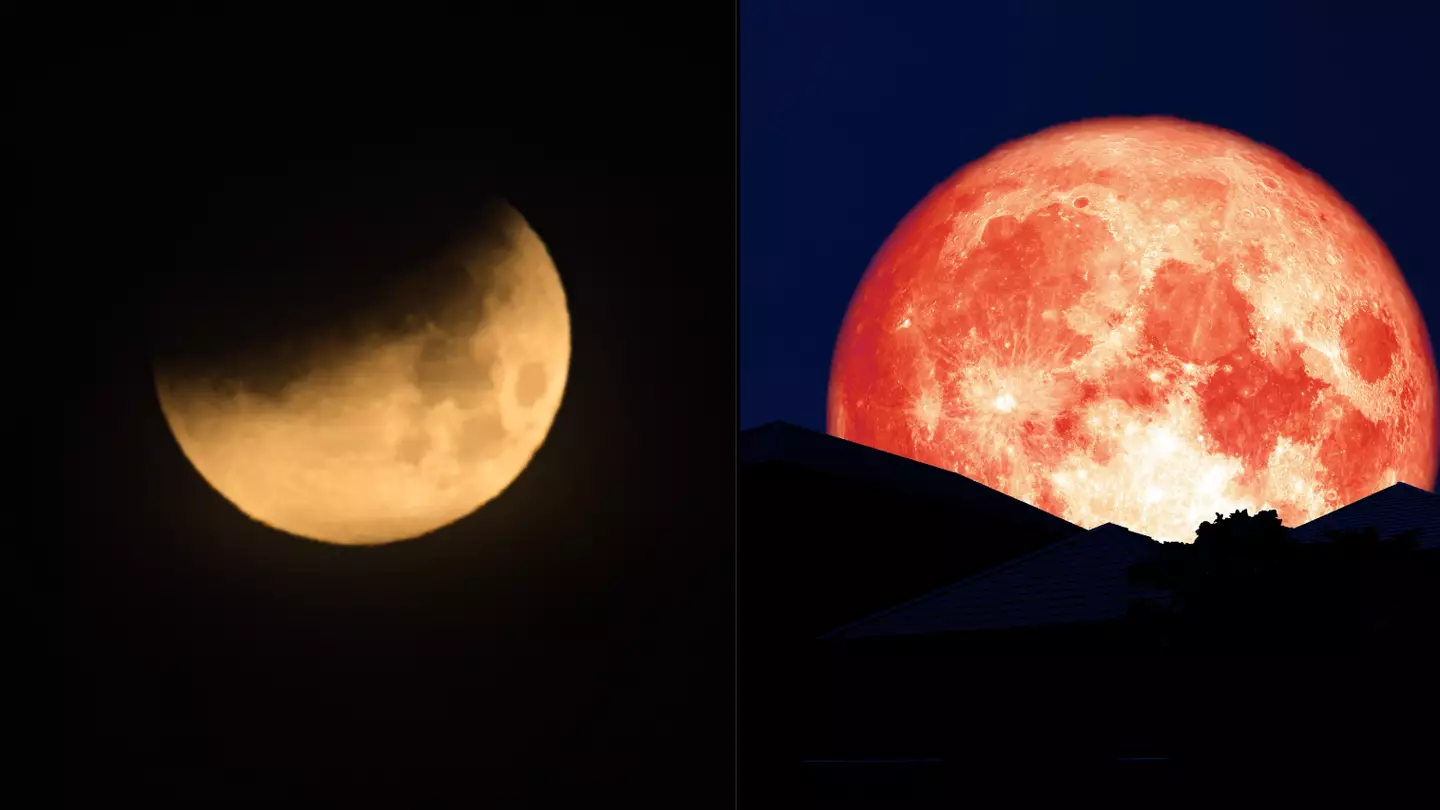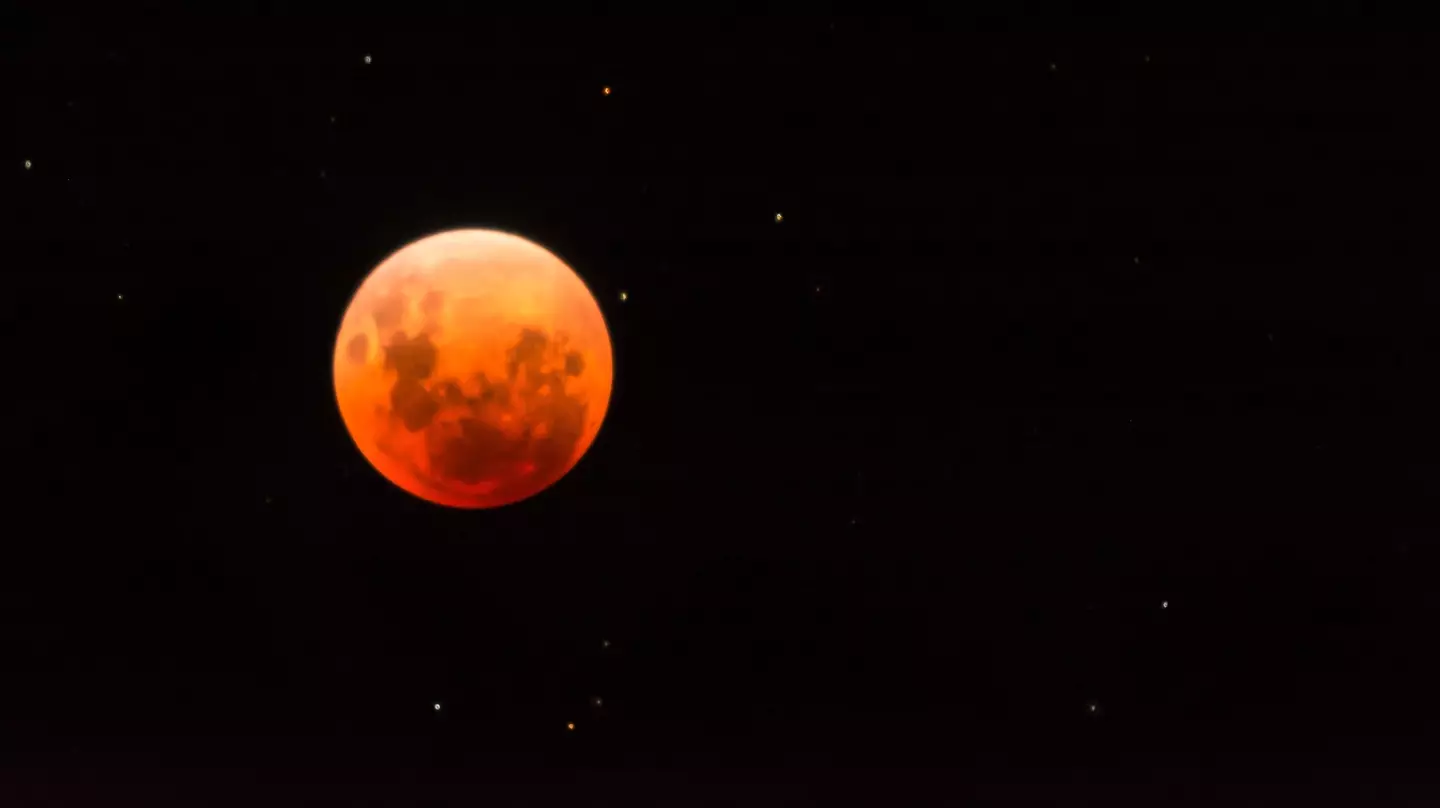
Tonight’s (Tuesday, November 8) Blood Moon eclipse will be the last one until 2025, so make sure you go out stargazing friends.
The moon is set to undergo a little makeover later as it aligns with the sun and our earth.
However, according to The Guardian, the total lunar eclipse will only be visible to North America in the early hours of the morning.
Then, after sunset, you’ll be able to spot the eclipse in Asia, Australia and the rest of the Pacific.
And for those worried they’ll miss it, do not fret, as tonight’s eclipse lasts three hours and 40 minutes from the time it starts changing colour at 8.09pm (AEDT).
Advert
However, choosing the best time to spot the eclipse in Australia will depend on how far north you are, as the moon may not be visible in some states.
Honorary Fellow of the University of Melbourne and Senior Curator (Astronomy) at Museums Victoria, Tanya Hill, told ABC News: "For instance, moonrise in Brisbane is at 6.01pm so the moon will have been in the sky for more than an hour before the eclipse starts.
"Whereas in more southern places, like Melbourne, for example, the moon doesn’t rise until 7:53pm, so the moon will be very low to the horizon."
So be sure to get those cameras out, as we won’t see another one in Australia until March 2025.
But rest assured, you won’t need any flashy telescopes or stargazing equipment as it may alter the moon's colour.
Advert
Dark environments away from bright lights is the ideal way to witness this specular view.
According to Dr Hill: “It’s one of these events where it’s actually better to just sit back and watch the grandeur of the sky.”

A lunar eclipse occurs when the sun, earth, and moon align, so the moon passes into earth’s shadow.
However, for total lunar eclipses, the entire moon falls on the earth’s darkest shadow - called the' umbra'.
Advert
And when the moon hits the umbra, it forms delicious deep reddish tones, creating a ‘Blood Moon’.
The Blood Moon will be visible in Australia during the following times:
- VIC/NSW/ACT/TAS - 8:09pm to 11.49pm ( the moon will at its most red from 9.16pm to 10.41pm)
- SA- 7:43pm to 11:19pm (the moon will be at its most red from 8:46pm to 10.11pm)
- QLD- 7:09pm to 10.49pm ( the moon will at its most red from 8.16pm to 9.41pm)
- NT- 6:42 pm to 10:19pm ( the moon will at its most red from 7.46pm to 9.11pm)
- WA- 6:43pm to 8:49pm ( the moon will at its most red from 6.43pm to 7.41pm)
According to NASA’s website: “The same phenomenon that makes our sky blue and our sunsets red causes the moon to turn red during a lunar eclipse.
“It's called Rayleigh scattering. Light travels in waves, and different colors of light have different physical properties.
Advert
"Blue light has a shorter wavelength and is scattered more easily by particles in sarth's atmosphere than red light, which has a longer wavelength."